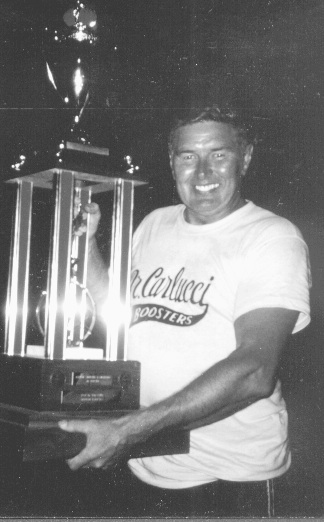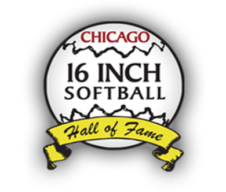A three sport star at Mt. Carmel, George went on to play basketball for Marquette University and professionally for the Sheboygan Redskins and the Chicago Bruins. George’s true love, however, was 16” softball. He played for such notable teams as the Golden Clothes and the Jimmy Rose Shamrocks during the 1939 season that included championships at Ogden Park and the 16th Ward Tournament. Morse’s career was interrupted by a 39 month stint in the Army during World War II. After the war, he returned to Chicago and became supervisor of Clarendon Park in 1946. Once on the job, he began a plan .: to make Clarendon the top softball park in the 50’s and 60’s by adding lights, bleachers, and four diamonds. To increase visibility at night, Morse had the balls dyed yellow in the basement of the park. A public address system and scoreboard kept the fans informed. Besides improvement to the field and ball, Morse instituted other changes to add an air of professionalism to Chicago’s game. First, a player was not allowed to enter the meticulously groomed field if he was not fully dressed in his team’s uniform. Second, Morse instituted rules changes. The base distance was increased from 45 to 50 feet, pitchers were allowed to take a drag step from the mound and perhaps the most progressive rule, he instituted the now universal third strike foul ball rule. These changes altered the face of softball forever and brought the top teams to Clarendon Park. Under Morse’s direction, Clarendon hosted two ASA Nationals and the prestigious Andy Frain Tournament. Fan reaction was tremendous. On many nights more people watched softball at Clarendon than saw the Cubs play during the day or the Sox that evening. In 1969 Morse assembled the Carlucci Bobcat team that went on to win the ASA National Championship. He returned in 1970-71 to manage them to two more national championships. Morse will always be remembered as one of the top managers and innovators in 16” softball history.

